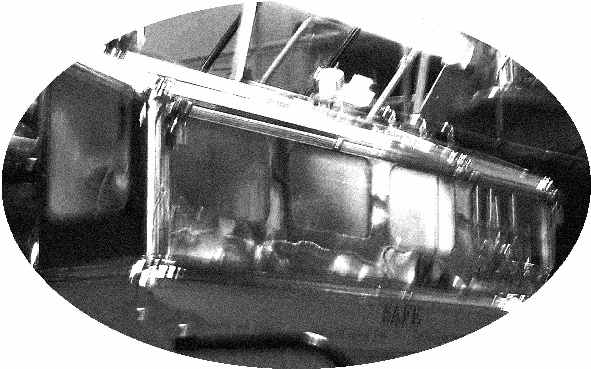
Ask anyone about their favourite application of wood, and you'll probably get an answer something along the lines of building materials or fuel for fires. You may get a few more creative answers such as model boats, snowshoes or charcoal for the BBQ. Wood is a substance that has a myriad of uses, but its influence on whisky is both an art and a science - applied with style and substance.
Aging whisky in wooden barrels is such a central tenet to making scotch that by definition, it must be aged for three years in oak barrels before it can be called "scotch". Most of us find it hard to imagine whisky culture without thinking of a cooper assembling casks from wooden staves and iron bands, or a warehouse full of oak hogsheads and sherry butts slowly nursing the water of life contained within. This leads us to the next obvious question: Why?
The effect of wood aging on whisky has been debated at length, but in a nutshell it helps to mellow the spirit, making it more smooth and a wee bit easier to drink. If you have any doubts about this, I double-dog dare you to try a bit of raw spirit the next time you visit a distillery, or if you're feeling particularly adventurous and know the right people, try some moonshine. You'll quickly discover why this stuff is often called "firewater". I had been drinking whisky for a couple of years and often took it straight up, before trying a bit of Miramichi moonshine for the first time on a salmon fishing trip. It certainly put my manhood back in its place! The process of whisky maturation in wooden casks is a relatively new endeavour, however. It only become commonplace on an industrial scale in the mid-nineteenth century. Prior to that, everything was "firewater"- bottled right from the still at a throat-burning 60-70% abv!
Whisky aged in wooden barrels undergoes some fairly complicated chemistry as part of the mellowing process. The barrels do "breathe" a little bit, promoting some interaction with the outside air and allowing some of the more volatile components like methanol (bad alcohol) to escape. Unfortunately, you also lose some ethanol (good alcohol) during this process. The portion that's lost to the atmosphere amounts to about 2% of the volume in the barrel per year, and is affectionately referred to as "the Angel's share". Now, 2% may not sound like such a big deal to be giving up to the angels, but imagine a barrel that's being aged for 20 years. With a starting volume of 30 litres, at the end of 20 years almost 10 litres has evaporated. You can understand why distilleries might be more apt to bottle more at 15 years as opposed to less volume at 20.
A few Islay distilleries claim that their malts take on some their character from the salty sea air, due to the proximity of their warehouses to the ocean. It's hard to say how much of this is true, but it certainly lends to the imagination and lore of the spirit!
During maturation, the whisky will take on some flavours from the wood itself. American oak barrels that have previously held bourbon are a very common choice for whisky maturation. American oak tends to be less porous than European oak, and for this reason there is less interaction between the spirit and the wood. If your spirit is already very full-flavoured and has a lot of character, you may want to limit the influence of the wood. Alternatively, many "woody" flavours including butter and vanilla can be increased by letting the spirit age longer in the cask, or using more porous wood.

Taking this to the next level, many distilleries now use casks which were previously used to store different types of wines, port or sherry. Using these types of casks can add both the colour and character of the previous occupant to the new tenant spirit. Good examples of this process are the MacAllan malt whiskies. The MacAllan has adeptly used sherry casks to add rich, buttery sweetness to their spirit. Recently, they have released a "Fine Oak" range, which allows us to glimpse what the MacAllan is like underneath the strong yet masterful sherry influence of their traditional expressions. One of the reasons they are able to draw so much of the cask's character into their whiskies is through the use of "first-fill" casks. Many distilleries will use a given sherry cask several times in succession to age their spirit, with the effects diminishing each subsequent use. "First-fill" means that these casks are being filled with whisky for the first time after their initial use for sherry, maximizing its effect on the spirit.
Although sherry is one of the most common "wood finishes" and can be found in expressions of almost every malt from Speyside to Islay, many distilleries have been experimenting with other types of finishes. Glenmorangie has been one of the pioneers of this field, bringing to market expressions aged with Port, burgundy and madeira wines. Many other distilleries have followed suit, including the "Classic malts", with their Distiller's Editions showcasing different wood maturations.
Innovation in wood maturation has led to an explosion of different whisky expressions and combinations of flavours. It doesn't always work well, and often the extra flavours mask the most admirable qualities of a given malt. The character of whiskies aged for too long (especially over 20 years) can sometimes become strained and tired, losing the pep and kick of a younger expression. Older isn't always better, so think about what you're spending those extra dollars for. At any rate, variety is the spice of life, so take the opportunity to try some different maturations of your favourite malt and note the influences of that wood in your whisky!




No comments:
Post a Comment